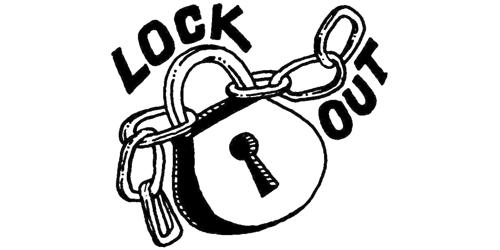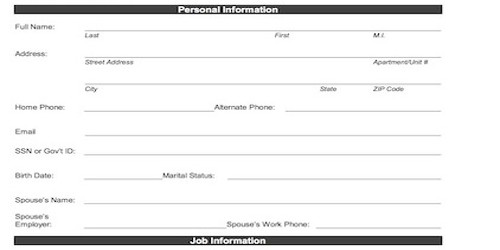The price of essential commodities goes up when there is more money in circulation in corresponding with the supply of articles and services. Thus broadly speaking, it is due to inflationary pressure. Rich men may have a mania for making more money but the poor people, as Oscar Wilde has said, think only of money.
So when prices of essential commodities rise, it is the common people that are more affected. They have less purchasing power. So the phenomenon of inflation makes the poor poorer but the rich became richer as they get more money.
As price index goes up, salaries of office employees go up or suitable dearness allowances are granted to cope with the market. In the meantime, prices go further up as more money has come into the market. In this way, a vicious circle is created. But the impact is felt pinchingly by the common people as essential commodities go beyond their reach. Indeed, commodity prices are generally linked with the staple article. If the price of rice, flour (wheat) or potato goes up, then that will push the prices of other articles further up.
With regard to the factors contributing to the rise in the general price-level, one may mention that on the demand side the following factors have operated: a rapid growth of population, an increase in incomes, rising non-development expenditure of the government, and increase in the money supply.
There are two main causes of rising prices (Inflation): Demand-pull and Cost-push. Both are responsible for a general rise in prices in an economy. But they work differently. Demand-pull conditions occur when demand from consumers pulls prices up. Cost-push occurs when supply cost force prices higher.
Demand-Pull Inflation –
Demand-pull inflation is the most common cause of rising prices. It occurs when consumer demand for goods and services increases so much that it outstrips supply. Producers can’t make enough to meet demand. They may not have time to build the manufacturing needed to boost supply. They may not have enough skilled workers to make it. Or the raw materials might be scarce.
If sellers don’t raise the price, they will sell out. They soon realize they now have the luxury of hiking up prices. If enough do this, they create inflation.
There are several circumstances that create demand-pull inflation. For example, a growing economy affects inflation because when people get better jobs and become more confident, they spend more.
As prices rise, people start to expect inflation. That expectation motivates consumers to spend more now to avoid future price increases. That further boosts growth. For this reason, a little inflation is good. Most central banks recognize this. They set an inflation target to manage the public’s expectation of inflation. The U.S. central bank, the Federal Reserve, has set a target of 2% as measured by the core inflation rate. The core rate removes the effect of seasonal food and energy cost increases.
Another circumstance is discretionary fiscal policy. That’s when the government either spends more or taxes less. Putting extra money in people’s pockets increases demand and spurs inflation.
Cost-Push Inflation –
The second cause is cost-push inflation. It only occurs when there is a supply shortage combined with enough demand to allow the producer to raise prices. There are several contributors to inflation on the supply side. For example, wage inflation that increases salaries. It rarely occurs without active labor unions.
A company with the ability to create a monopoly is also a contributor to cost-push inflation. It controls the entire supply of a good or service. Natural disasters create temporary cost-push inflation by damaging production facilities. That’s what happened to oil refineries after Hurricane Katrina. The depletion of natural resources is a growing cause of cost-push inflation. For example, overfishing has reduced the supply of seafood and drives up prices.
Government regulation and taxation also reduce supplies. In 2018, U.S. tariffs reduced supplies of imported steel. That created shortages in manufactured parts, with some producers raising prices. In 2008, subsidies to produce corn ethanol reduced the amount of corn available for food. This shortage created food price inflation.
When a country lowers its currency’s exchange rates, it creates cost-push inflation in imports. That makes foreign goods more expensive compared to locally produced goods.
The inadequacy of agricultural output to match the rising demand has been an important factor causing the price level to rise from the supply side. With demand for these goods generally inelastic, even marginal change in output has caused a disproportionate increase in prices.
Industrial production, though not unsatisfactory on the whole, has not been adequate particularly in respect of certain essential industrial products like basic consumer goods and important industrial and agricultural inputs.
The decline in the growth rate began in the mid-sixties and persisted until the mid-seventies. The recovery thereafter has, no doubt, pushed up the industrial growth rate, but the demand has been continuously raising causing prices to rise. An important factor, which has contributed substantially in rapidly raising the price level, is the high prices we had to pay for such vital imports such as petroleum, oil and lubricants, fertilizers and chemical products and food grains.
So the best way to resist inflation is to increase production, both in agricultural fields and factories. In our country, however, it presents a peculiar picture there is a recession in some fields while inflation continues in many sectors. Inflation here is not invisible. Dishonest businessmen, by creating artificial scarcity of essential articles by hoarding, with the connivance of the agents of law and order, maintain the upward trend of prices.
For our country once presented the unique phenomenon of inflation with recession simultaneously. A section of economists apologetically holds the view that inflation is often the indication of brisk economic growth. As new avenues of investment are explored, as plan outlays increase, deficit financing and inflation are bound to take place. Under the Five Year Plan scheme, money is invested now where the yield would accurse about five years later. This is an irritant of inflation; likewise, huge amounts of uncovered expenditure in the budget and overmuch borrowing push up the price. Alongside, parallel currencies of crores of money work in the black market. So very cautious and scrupulous planning is called for.
Information Sources:
















